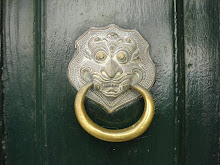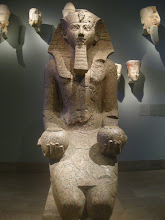As I was saying, we took our Israeli friends to Aida Refugee Camp on the outskirts of Bethlehem on Christmas Day. It was a sunny early Friday afternoon, much, much warmer than what is usual for the season. We got out of our cars, the bright sunshine making us squint our eyes, and started walking.

Basically everything in the Palestinian refugee camps is funded by the UN. After 1948, after the height of the ethnic cleansing of Palestine carried out by Zionist terrorist groups, when 531 Palestinian villages and 11 urban neighborhoods were evacuated and laid to waste by the armed Zionist groups, innocent farmers slaughtered, wives, mothers and daughters raped, property confiscated, houses demolished, fruit orchards cut down, and 800 000 Palestinians forcefully expelled and displaced for more than 60 years to come, and still counting. After the declaration of Israeli independence, and the armistice with the surrounding Arab states, the UN stepped in to aid the hundreds of thousands of displaced Palestinians. To this day, UNRWA is the main provider of education, health care, relief, and social services to the more than 4.6 million registered Palestinian refugees in the Middle East.
Hence the baby blue UN dumpsters lining the Israeli Apartheid Wall.

We walked down the narrow concrete walled streets, past kids running around on the asphalt. Bleak concrete houses crowding around us, built on top of each other, not quite finished, with electricity cables hanging, makeshift water pipes sticking out.
On every visible concrete surface along the streets, there are paintings. Artists repeating images that are way, way too common here:

The key. The symbol of the right of return for the 1948 refugees. With the map of Palestine on it, and the saber in the background--the cactus that traditionally marks the borders of Palestinian farms and gives refreshingly juicy sweet cactus fruits in the summer (but also stomach problems if you eat too many!). All over what is Israel today, there are hedges of saber stubbornly growing and growing back no matter how many times they are uprooted or cut down, marking out the 531 villages and the old farms of the Palestinians who fled over 60 years ago. As a symbol of the unbreakable bond between Palestinians and their land.
The olive tree. Symbol for peace and for Palestinian steadfastness on the land. Israel might uproot trees to build the Wall, confiscate olive orchards, cut off farmers from their lands with electric fences--settlers might destroy olive harvests. But there are trees that have stood on these lands since the time of Jesus, and there are farmers who still tend to their orchards the way their families have done in generations, and there are organizations that work to replant trees, and the golden green Palestinian olive oil is still served every morning on every single Palestinian breakfast table, with bread and zaatar, because Palestinians will not give up.
Sentimental? A tad melo-dramatic? You try walking through the streets of refugee camps, after reading book after book on the shameful treatment by Israel and the world of what is now millions of people who still hold the deeds to their lands, still have the rusty keys to their houses that don't even exist anymore, but are stuck in shanty concrete towns with nothing to their name but what the UN provides, without getting sentimental.
Anyway. The paintings on the walls. There is this one:
And it made me cry. I walked behind the group, wiping my cheeks, feeling worthless and helpless for being a part of a world who can allow this to go on. Our group was now lead by a self-appointed Japanese guide who apparently lives in the Camp, and Tarek walked beside me and tried to comfort me.
It's a list of the villages and cities that the Aida Refugee Camp families fled from in 1948.
.
Yeah.
Anyway. Our Israeli friends, who had started out quite apprehensive in the morning, being in a Palestinian-governed area (illegally according to Israeli law) started to become a little less uneasy. If not a little bit crazy. This is one of the guys, symbolically peeing on the Wall, which, by the way, is heavily guarded 24 hours of the day by Israeli soldiers who generally do not have a sense of humor about the situation:
I walked out of the Camp, determined to do something. It's the kids. Stuck between concrete walls on asphalt streets. Without lawns, swimming pools, parks or anything. So now Tarek and I will raise some money, rent a bus, (hopefully) get a permit for Tarek to cross the border to Israel, pack lunches and swimsuits and take groups of refugee camp kids to the sea in Yafa/Tel Aviv on our days off as soon as the weather allows it. Seriously. They've never went swimming. They've never even seen the sea. Can you imagine that?





















1 comment:
Bra att du skriver så att man får veta här hemma i trygga svedala!
Post a Comment